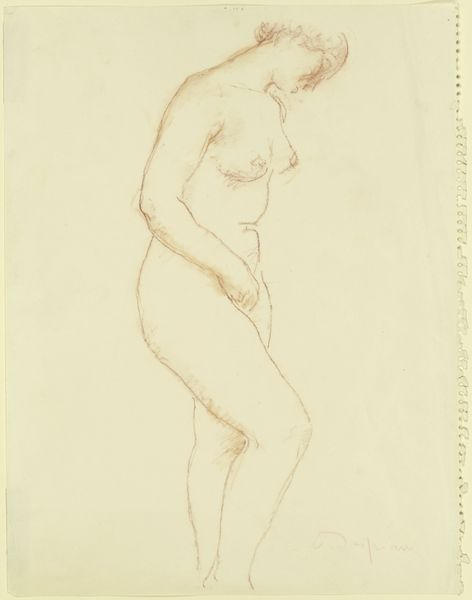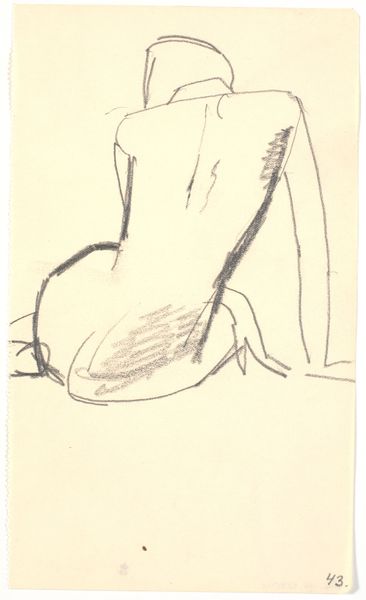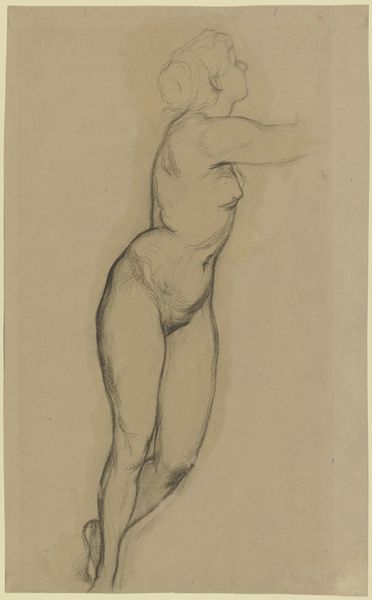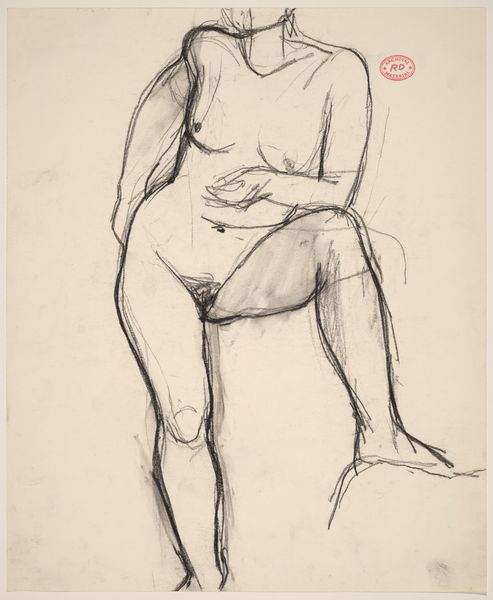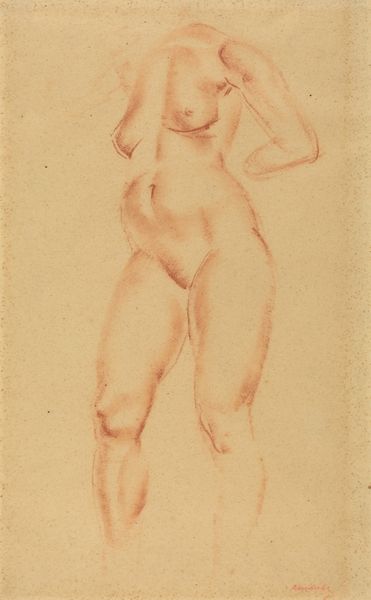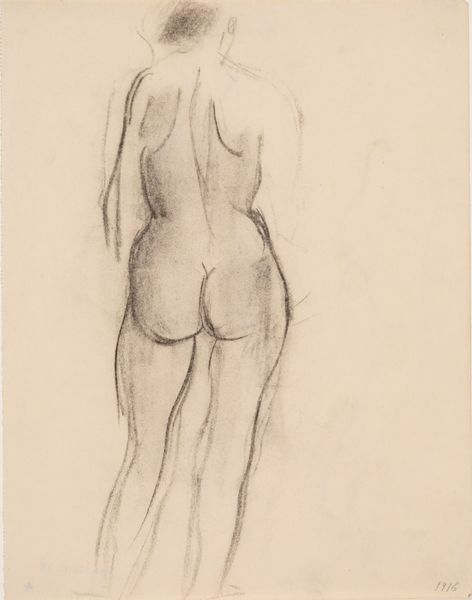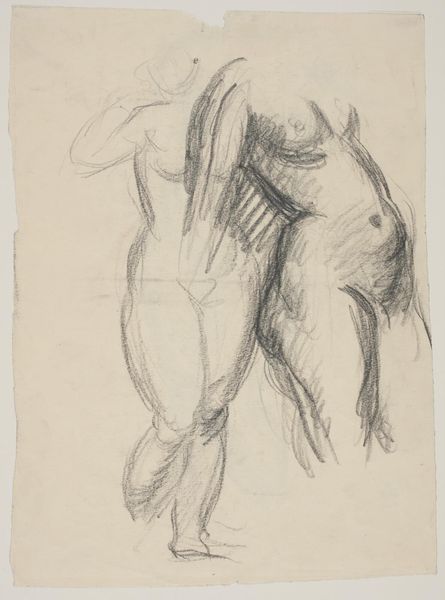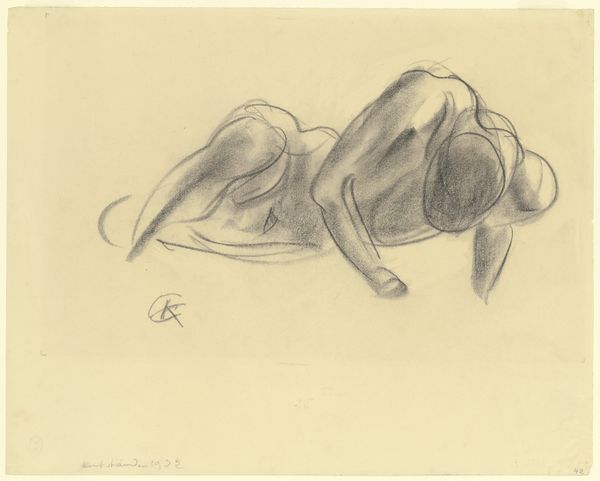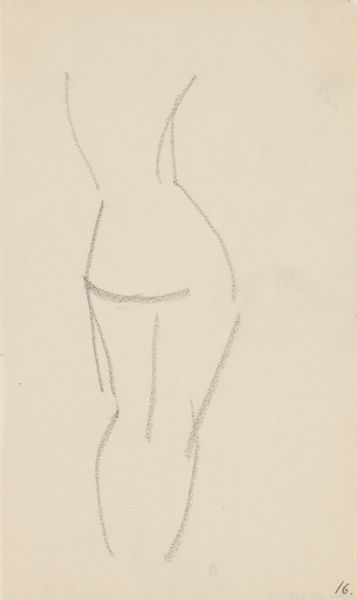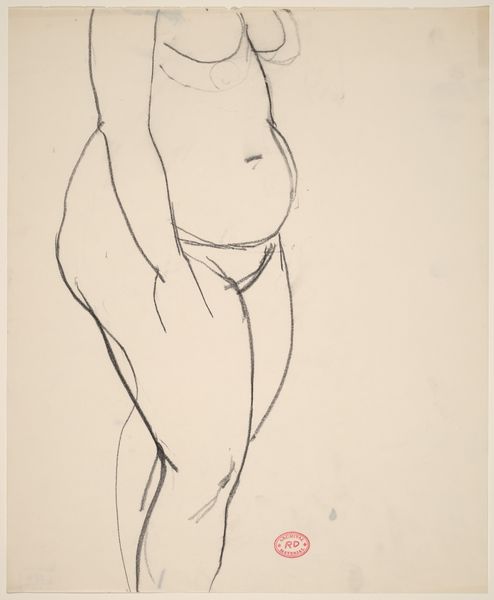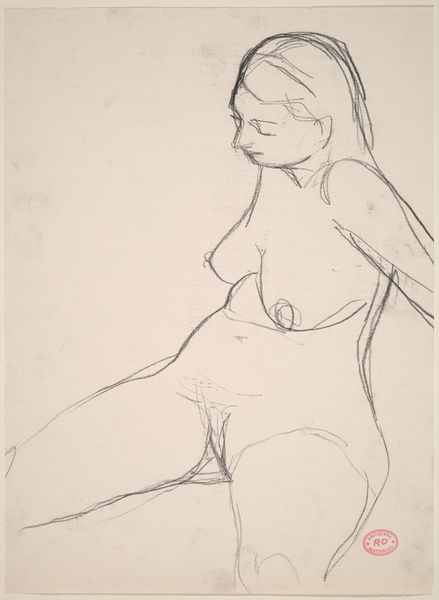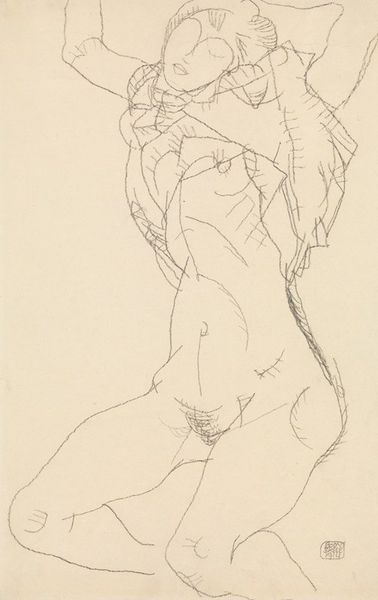
drawing
#
portrait
#
drawing
#
portrait drawing
#
academic-art
#
nude
Dimensions: 253 mm (height) x 187 mm (width) (bladmaal)
Curator: Immediately, I notice the stark simplicity and the artist’s incredible skill in conveying form with so few lines. It feels incredibly direct, a raw and immediate expression of the female figure. Editor: That's right. What we have here is a drawing by J.A. Jerichau dating from 1915, titled "Kvindelig model, liggende"—"Female model, lying down". Curator: “Lying down,” but I see her almost rising up, doesn’t she seem in motion, defiant even? I'm curious about the perspective. It disrupts the passive nature often associated with nudes in art history. What do you make of it? Editor: Yes, the composition is quite unconventional. I would read it through the symbolic legacy of the female form in art – a powerful figure but at an intimate and even vulnerable angle. Curator: Right, and I think situating this within its historical moment is vital. 1915, the throes of World War I... this image feels like a defiant affirmation of the body. This rendering resists objectification. Her agency is subtly palpable. Editor: Indeed. Also, consider the cultural context within Scandinavian art; there’s often a dialogue of symbolism between light and dark. The drawing favors raw form; the model exists starkly, simply, undeniably. Curator: What truly strikes me is how a simple pencil on paper evokes so much physicality. Each stroke holds weight, shadow, volume. How do you perceive it psychologically, seeing as our perception of the female body is often laden with imposed standards? Editor: The power of a sketch such as this is in its honesty. In art history the female form may serve as a visual representation of vulnerability. A drawing like this reveals the internal fortitude and psychological complexities the model exudes. There’s both universal recognisability, yet also particularity in her expression that adds weight. Curator: Absolutely. Ultimately, it provokes critical reflection not just about the representation of women in art, but also how women claim spaces, narratives, their very bodies, both then and now. Editor: I think so too, it asks us to think more deeply about what we consider "classic" forms. Thank you, this has made the image and our role in receiving its weight even clearer to me.
Comments
No comments
Be the first to comment and join the conversation on the ultimate creative platform.
